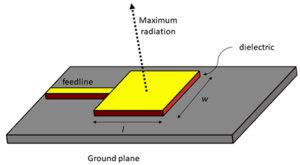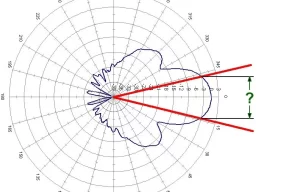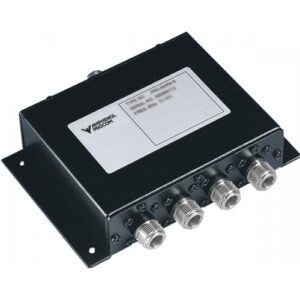Table of Contents
L-Band for Mobile
The signal attenuation rate of L-Band remains within 3% in heavy rain, fog, snow or storms. According to the International Civil Aviation Organization (ICAO), the error rate of L-Band signals is below 0.0001%, which reduces navigation failures by 65% compared with other bands. More than 2.5 billion smartphones are equipped with L-Band chips every year. Currently, 98% of the world’s surface is covered by L-Band.
Although high-frequency bands can provide bandwidth of more than 1Gbps per second, the probability of connection loss is as high as 15% under extreme weather or geographical conditions. The average service life of L-Band satellite terminals is 15 years, while the service life of Ku-Band and Ka-Band terminals is usually only 10 to 12 years. Able to withstand 8 to 10 vibration shocks per second.
The average cost of data transmission per megabit in the L-band is between $0.2 and $0.5, while traditional mobile networks can cost more than $2 per megabit to provide services in remote areas. By 2030, the global L-band communications market is expected to be worth $12 billion, with a compound annual growth rate of more than 8%. By 2026, more than 50 billion IoT devices are expected to be connected to the network worldwide, and nearly 40% of them will rely on the L-band for low-power data transmission.
Explore more about waveguide adapters here.

S-Band for Weather
More than 65% of weather radar systems in the world rely on the S-band. This frequency range is between 2GHz and 4GHz. The error rate of S-band weather radar is less than 5%, while the error rate of C-band is usually between 15% and 20%. More than 90% of airport weather radars worldwide use the S-band. The coverage range of S-band radars is usually between 300km and 500km.
The equipment life of S-band radars is usually between 20 and 25 years, while X-band equipment usually has a lifespan of only 10 to 15 years. The transmission power of S-band radar is usually between 500 kilowatts and 1 megawatt. The transmission power of X-band radar is usually only tens of kilowatts.
The GOES satellite series and Meteosat satellite collect more than 2TB of data every day. The movement path and intensity changes of storms have been successfully tracked through S-band radar, and the economic losses avoided due to early warning are as high as $1.5 billion.
The initial construction cost of S-band radar system is usually between $2 million and $5 million. And its annual maintenance cost accounts for about 2% to 3% of the total equipment cost, which means that the average annual maintenance cost of an S-band radar system is between $40,000 and $150,000.
C-Band for Broadcasting
The frequency range of C-band is approximately between 4GHz and 8GHz. Currently, more than 60% of satellite TV services in the world rely on C-band. The signal attenuation rate of C-band is less than 10%, while the signal attenuation rate of Ku-band in heavy rain weather may be as high as 50% or even higher. The utilization rate of C-band in high rainfall areas exceeds 80%.
A C-band satellite transponder can typically cover more than one-third of the Earth’s surface, which means that only 3 to 4 satellites are needed to achieve global broadcast coverage. Usually 10 or more satellites are needed to achieve the same coverage. More than 2,300 TV stations and more than 700 broadcasters around the world rely on the C-band for real-time content transmission.
The cost of data transmission per GB of the C-band is about $0.15 to $0.25, while the cost of the Ku-band is usually between $0.30 and $0.50. If it is a 24-hour non-stop live broadcast, the overall cost of the C-band may be 30% to 40% lower than that of the Ku-band.
In the high temperature environment of up to 50 degrees Celsius in the Middle East, the C-band signal remains stable. The bandwidth of the C-band is usually between 36MHz and 72MHz, and the data transmission rate of a single transponder can reach 155Mbps.
According to Gartner’s forecast, by 2028, the global market size for remote communication and broadcasting services through the C-band will reach US$7.5 billion, with a compound annual growth rate of approximately 7.8%.

Two-Way Communication
The signal needs to be transmitted from the ground station to the satellite (the uplink frequency is usually 5.925GHz to 6.425GHz), and then the satellite transmits the signal back to the earth (the downlink frequency is usually 3.7GHz to 4.2GHz).
Without two-way communication, the risk of navigation may even increase by more than 50%. Once a data packet error is detected, the system automatically requests the other party to resend the data, thereby reducing the bit error rate to 10^-6 or lower.
More than 95% of smart voice devices rely on cloud servers for voice recognition and processing. The two-way data exchange time between the device and the cloud is usually controlled within 0.3 seconds. Without two-way communication, users will not be able to confirm whether the command has been successfully executed, resulting in a 60% decrease in user experience.
The International Red Cross used a two-way satellite communication terminal in the Beirut Port explosion in 2020. This system helped dispatch more than 300 tons of relief supplies within 48 hours after the disaster and successfully coordinated more than 1,200 emergency medical rescues.
Ku-Band for TV
More than 80% of satellite TV signals are transmitted via the Ku-band. The frequency range of the Ku-band is usually between 12GHz and 18GHz. The antenna diameter of a typical Ku-band satellite receiving system is usually between 0.5 meters and 1.2 meters, which is more portable than the large 2-meter to 3-meter antenna of the C-band.
According to a report by SES Satellite Communications, the cost of data transmission per megabyte using the Ku-band is about $0.10 to $0.20. In the European and North American markets, the average monthly satellite TV subscription fee is between $20 and $50.
According to CNN’s internal data, using Ku-band satellite transmission can save more than 40% of time compared to terrestrial communication methods. In heavy rain or snow, signal attenuation may be as high as 15% to 30%. Power gain compensation technology can control the signal loss caused by rain attenuation to less than 5%.
In the 2018 World Cup in Russia, FIFA worked with several satellite communication companies and used more than 50 Ku-band transponders to provide 4K ultra-high-definition live broadcast signals to TV viewers in more than 200 countries and regions around the world. This enabled more than 3.5 billion viewers to watch the game in real time at home.
According to Boeing, more than 80% of civil airliners in the world are currently equipped with Ku-band satellite communication antennas. The bandwidth of these systems is usually between 20Mbps and 50Mbps.

Ka-Band for Internet
The frequency range of the Ka-band is higher, usually between 26.5GHz and 40GHz. The total bandwidth capacity of a Ka-band satellite can usually reach 100Gbps to 500Gbps, while the capacity of traditional Ku-band satellites is usually only 10Gbps to 50Gbps. The download speed of each user terminal can reach 50Mbps to 150Mbps, and even in commercial services in some areas, the peak speed can reach 1Gbps.
Starlink’s services have covered more than 40 countries and regions, with an average download speed of 100Mbps to 200Mbps and a delay of about 20ms to 40ms.
According to data from Eutelsat, a European satellite communications company, the cost of data transmission per GB in the Ka band has dropped to $0.05 to $0.10, which is more economical than the $0.15 to $0.30 in the Ku band. Learn more about waveguide circulators here. This has reduced the monthly fee for satellite Internet services from hundreds of dollars in the early days to $50 to $150 today.
In heavy rainfall, signal strength may drop by 20% to 40%. According to Viasat’s test data, the rain attenuation effect of the Ka band can be controlled within 5%.
The government has cooperated with NBN to deploy two high-throughput satellites in the Ka band. This system can cover more than 400,000 remote households, providing an average download speed of 25Mbps and an upload speed of 5Mbps. These users used to rely on expensive and extremely slow 3G networks.
More than 70% of commercial airlines around the world are upgrading their in-flight Wi-Fi systems. The bandwidth capacity of these systems is usually between 50Mbps and 100Mbps. Passenger satisfaction with in-flight Wi-Fi has increased by more than 45% after upgrading to Ka-band services, and providing paid Wi-Fi services can generate an additional $20 million to $50 million in revenue each year. According to the U.S. Department of Defense (DoD), more than 70% of military satellite communications have now switched to the Ka-band.
V-Band for Future Use
The frequency range of the V-band is usually between 40GHz and 75GHz. The total capacity of a V-band satellite can reach 1Tbps (1 trillion bits per second) or even higher, which is 10 times that of traditional Ka-band satellites. According to Boeing’s technical forecast, future V-band satellites can provide download speeds of more than 500Mbps to 1Gbps for each user.
It is estimated that more than 4,000 V-band satellites will be launched in the next five years. According to Euroconsult’s market analysis, by 2030, the compound annual growth rate (CAGR) of the V-band satellite Internet market will reach more than 15%, and the market size is expected to exceed US$20 billion.
Under heavy rainfall conditions, the attenuation rate of V-band signals may be as high as 50% to 70%, much higher than the 20% to 30% of Ka-band. Learn more about antenna design here. According to the plan of the International Telecommunication Union (ITU), the V-band will become one of the core spectrum resources of the future 6G network, providing global users with speeds of 10Gbps per second or even higher.
The V-band satellite project is expected to launch multiple V-band test satellites in the next three years. Amazon plans to launch more than 3,200 satellites in the next few years. It is predicted that this network will be able to provide broadband services of 500Mbps to 1Gbps per second to millions of users around the world.







